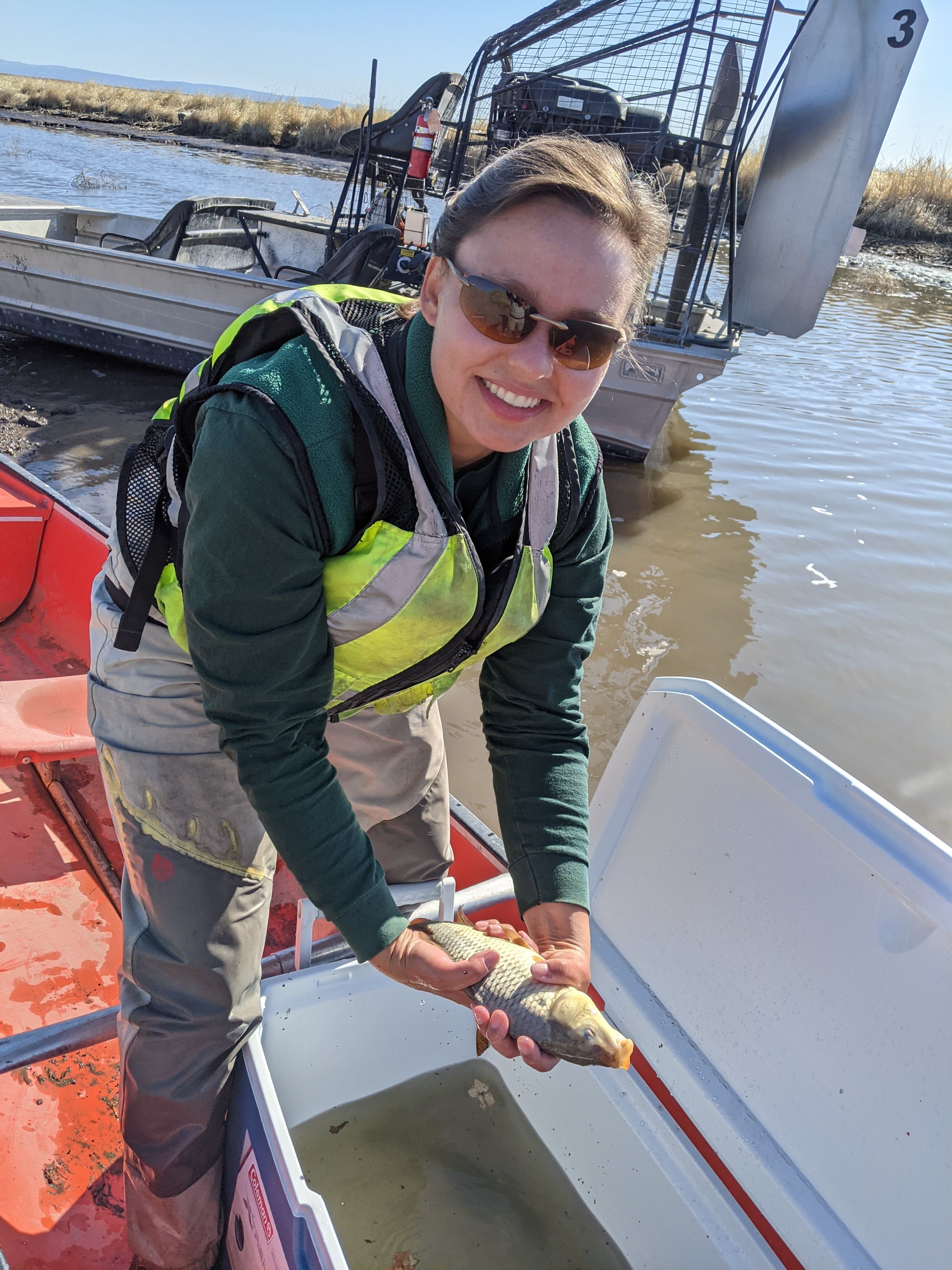Casie Smith, U.S. Geological Survey Ecologist

An important aspect of collaboration is having diverse perspectives, education and knowledge around the table; the antithesis of groupthink. When it comes to the Harney Basin Wetlands Collaborative and their efforts toward Malheur Lake restoration, there are some dedicated scientists that help us all understand the landscape and outcomes of possible restoration actions. One of these scientists is Casie Smith who is an ecologist with the U.S. Geological Survey Oregon Water Science Center. "My education has been in conservation biology and wetland ecology. After graduate school at the University of Maryland, I started working with USGS in Portland and dove head-first into water-quality monitoring. I had fantastic mentors in Portland that emphasized the patterns in water-quality data related to biotic processes (from living things, like algae) and abiotic processes (nonliving things, like erosion). These processes are important to the water quality in Malheur Lake."
In 2018, Casie relocated to Bend to increase USGS's work east of the Cascades. "The idea was that living in central Oregon would allow me to interact more frequently with partners face-to-face and to build relationships with multiple organizations. Soon after I settled in Bend, Tammy Wood (a now retired hydrologist with USGS) asked that I help her manage some of the Malheur Lake studies." Since Tammy's retirement, Casie has continued the scientific investigations on the lake to inform management actions and has been actively involved with the Harney Basin Wetlands Collaborative. "I enjoy learning about complex systems such as Malheur Lake, and I've always felt passionate about the intersection of humans and the environment. In the Harney Basin, the collaborative works together and applies our scientific understanding of the system to make management decisions. It's really invigorating to be a part of it."
What's unique about Casie's work with USGS is that she does not design or implement restoration actions, but conducts scientific investigations. "We can assess the scientific merit of restoration designs and can monitor effectiveness of actions. For example, you would not see USGS staff transplanting bulrush with shovels and backhoes. But we (USGS) could 1) apply knowledge from past studies to hypothesize how transplanting bulrush could affect lake water quality and habitat, and 2) monitor bulrush survival and the effect on water quality after transplanting." Studies like these can then influence future restoration actions.
Casie spends a lot of time studying, learning, and discovering aspects of the Malheur Lake ecosystem. When she's not immersed in that work, you can find her exploring the northwest, hiking local volcanoes, kayaking rivers and lakes, and snowshoeing in the winter. She's also a hobbyist entomologist (people who study insects) and loves documenting the native bees in her pollinator garden.

